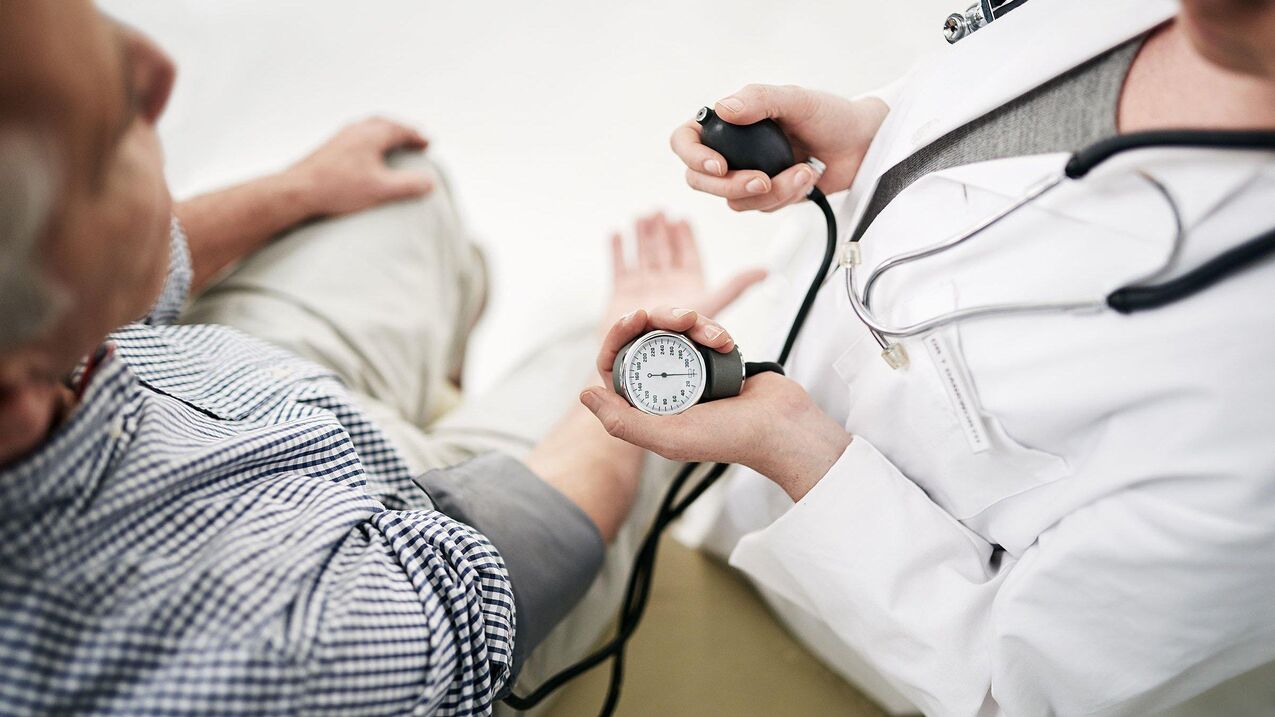
What is high blood pressure?
- Essential (idiopathic) hypertension is an independent nosological unit and an independent disease that is not caused by organ and system dysfunction. For example, blood pressure can be elevated for other reasons besides kidney disease. The diagnosis of essential hypertension (EG - essential hypertension or GB - essential hypertension) is characterized by persistent clinical symptoms - elevated systolic and diastolic blood pressure. Almost 90% of patients with persistently elevated blood pressure have essential hypertension.
- Symptomatic hypertension, also called secondary hypertension, is high blood pressure caused by an underlying disease, such as an inflammatory process in the renal system - glomerulonephritis, polycystic kidney disease, or diseases of the pituitary or pancreas. Furthermore, secondary hypertension occurs against the background of pathological changes in the vasculature (atherosclerosis) and can trigger symptomatic hypertension and neurological diseases. In addition, secondary hypertension is common during pregnancy and in gynecological diseases (cysts and tumors).
- Hypertension is diagnosed as Stage I disease if the blood pressure is fixed between 140/90 and 159/99 mmHg. In this case, the pressure may return to normal but periodically "jump" to the specified limit.
- Hypertension is considered stage II disease if blood pressure is recorded in the range of 160/100 to 179/109 mmHg. There is virtually no relief, but the stress can be managed with medication.
- Persistent blood pressure in the range of 180/110 and above is considered a clinical sign of stage III hypertension. During this stage, blood pressure does not actually drop to normal levels, and if it does drop, it is accompanied by heart weakness and even heart failure.
pressure indicator
ICD-10 code
What causes high blood pressure?
- Kidney disease - nephritis, the most common is glomerulonephritis. Factors inducing secondary hypertension.
- Renal artery stenosis (narrowing).
- Congenital pathology of renal artery obstruction (coarctation).
- Adrenal gland tumors - chromocytosis (impaired production of norepinephrine and epinephrine).
- Increased aldosterone production, called hyperaldosteronism, occurs during adrenal tumors.
- Impaired thyroid function.
- alcoholism.
- Excessive or continued use of medications, especially hormonal antidepressants.
- addiction.
- Age: Men are over 55 years old, women are over 65 years old.
- Increased blood cholesterol levels (more than 6. 6 mmol).
- Genetic predisposition, family history.
- Obesity, especially abdominal obesity, has a waist circumference of more than 100-15 cm for men and 88-95 cm for women.
- Diabetes, changes in normal glucose tolerance levels.
- Lack of physical activity, osteochondrosis.
- Chronic stress, increased anxiety.
Symptoms of high blood pressure
- Severe, sudden, or rapidly worsening headache.
- Blood pressure readings as high as 260/120 mmHg.
- There is pressure and pain in the heart area.
- Severe shortness of breath.
- Vomiting, starting with nausea.
- Increased heart rate, tachycardia.
- Loss of consciousness, convulsions, paralysis.

















